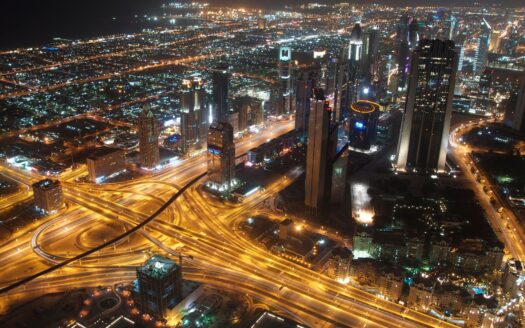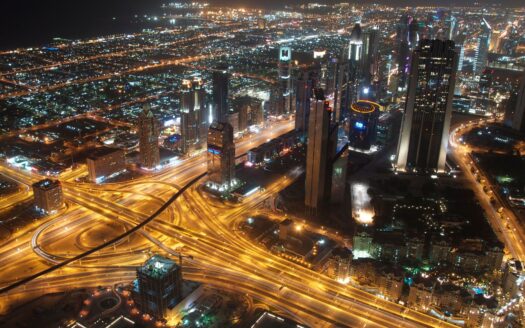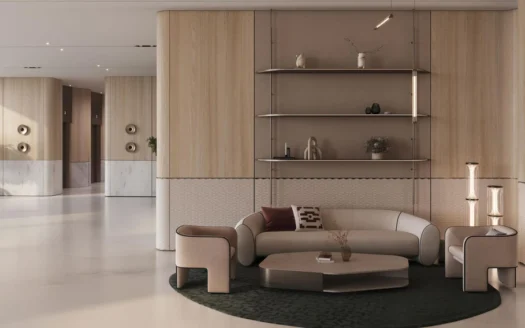Key Factors That Influence Real Estate Prices in Dubai
Dubai has earned a reputation as one of the most exciting and rapidly evolving real estate markets in the world. Known for its stunning luxury developments, record-breaking skyscrapers, and diverse investment opportunities, the city attracts buyers from around the globe. But what makes property prices fluctuate in this dynamic market? For investors and homebuyers alike, understanding the key factors that influence real estate prices in Dubai is crucial to making informed decisions. From the location to economic factors, several key elements shape the value of properties across the city.
1. Location
Prime Areas vs. Emerging Areas
One of the most critical factors in determining property prices in Dubai is location. Premium locations like Downtown Dubai, Palm Jumeirah, and Dubai Marina often command the highest prices. These areas are not only iconic but also offer access to exclusive amenities, lifestyle options, and breathtaking views, making them highly desirable for luxury buyers and investors.
On the other hand, emerging areas such as Dubai South and Al Furjan offer more affordable options with the potential for future growth. As these neighborhoods continue to develop, prices may increase as infrastructure improves and demand rises, offering a balance of affordability and investment potential.
Proximity to Key Landmarks
Properties close to Dubai’s famous landmarks—like the Burj Khalifa, The Dubai Mall, or The Palm Jumeirah—command a significant premium. Buyers and investors are often willing to pay more for properties that are situated near these globally recognized icons. This is largely due to the prestige associated with these locations, not to mention the convenience and breathtaking views they offer.
2. Infrastructure and Accessibility
Transportation Links
Good connectivity plays a massive role in influencing property values. Properties located near major roads, such as Sheikh Zayed Road, or near Dubai Metro stations enjoy higher demand because of the ease of access to the rest of the city. Proximity to Dubai International Airport or Al Maktoum International Airport can also boost a property’s desirability, especially for frequent travelers or business professionals.
Community Facilities
Areas that have well-developed infrastructure—such as schools, hospitals, shopping malls, and parks—tend to have higher real estate values. For instance, neighborhoods like Jumeirah or Arabian Ranches, which offer top-notch community facilities, attract families and professionals looking for a complete lifestyle package, further driving up property prices.
3. Property Type and Features
Luxury vs. Standard
There’s a significant difference in pricing between luxury properties and standard homes. Luxury properties with features like waterfront views, private pools, spacious layouts, or smart home technology fetch much higher prices. Areas like Palm Jumeirah and Emirates Hills are known for their high-end, exclusive residences, attracting elite buyers willing to pay a premium for luxurious living.
Apartment vs. Villa
The type of property also affects its value. Villas, due to their size, privacy, and outdoor space, are generally priced higher than apartments. For example, a villa in The Springs or Arabian Ranches will often cost more than a comparable-sized apartment in Downtown Dubai or Business Bay.
New vs. Resale
There’s also a pricing distinction between new properties and resale homes. Off-plan properties (homes that are still under construction) may be offered at a lower price to attract early buyers, especially if the market is competitive. Meanwhile, resale properties could command a higher price depending on their location, condition, and demand.
4. Market Demand and Supply
High Demand Areas
When demand outpaces supply, prices typically surge. Areas with high demand like Dubai Marina and Palm Jumeirah remain popular for their waterfront views and luxurious amenities. These areas are known for attracting both wealthy buyers and renters, contributing to consistently high property prices.
Supply Glut
Conversely, an oversupply of properties can lead to falling prices. In some parts of Dubai South and Dubailand, an influx of new developments has led to a situation where supply exceeds demand, causing property values to dip. However, as the city continues to grow and new projects come online, this imbalance may correct itself over time.
5. Economic Factors
Local Economy
Dubai’s real estate market is closely tied to the overall health of the UAE economy. Economic factors like oil prices, tourism growth, and business development influence the demand for property. For example, a booming economy typically leads to higher property prices as more people flock to the city for business or leisure, driving demand for both residential and commercial properties.
Global Economic Trends
Global economic conditions can also impact real estate prices in Dubai. Currency exchange rates, investment trends, and geopolitical stability all affect foreign investment in Dubai’s real estate market. With a large proportion of buyers being international, fluctuations in their home economies can directly influence how much they’re willing to invest in Dubai properties.
6. Government Policies and Regulations
Freehold vs. Leasehold
Freehold properties—where buyers own the property and the land it sits on—are available in designated areas like Dubai Marina, Downtown Dubai, and Palm Jumeirah, and they generally command higher prices. In contrast, leasehold properties, which are available for long-term leases, tend to be more affordable, but they offer less long-term security.
Investor-Friendly Policies
Dubai’s government has introduced various incentives to attract foreign investors, such as residency visas for property owners and tax-free property transactions. These policies make Dubai particularly attractive for international buyers, which in turn drives up real estate prices in key areas.
New Regulations
Changes in government policies, like new regulations around property transactions, taxes, or financing options, can have an immediate effect on property prices. For example, an increase in loan-to-value ratios for mortgages can make it easier for buyers to enter the market, leading to increased demand and rising prices.
7. Development and Future Projects
Upcoming Developments
The anticipation of new projects often leads to increased property prices in surrounding areas. For instance, the Expo 2020 Dubai announcement resulted in rising real estate values in nearby neighborhoods like Dubai South and Jebel Ali. Investors are always on the lookout for areas where major projects are planned, as this signals potential for property appreciation.
Infrastructure Upgrades
New infrastructure developments—such as metro extensions, new roads, or the construction of major shopping centers—often lead to a rise in real estate prices. Buyers and investors are attracted to areas that are set to benefit from these upgrades, as they not only improve quality of life but also increase property values.
8. Rental Yields and ROI
Investor Considerations
For investors, one of the primary considerations is the rental yield—the annual rental income as a percentage of the property’s purchase price. Areas like Jumeirah Village Circle (JVC) or Dubai Sports City are known for offering higher rental yields, making them popular with investors seeking properties that deliver strong returns on investment (ROI).
ROI Impact
Areas with higher ROIs tend to experience more competitive pricing, as investors are drawn to properties that promise better returns. As a result, property prices in these areas may rise, especially if they’re seen as long-term, high-yield investments.
Dubai’s real estate market is shaped by a combination of factors—from prime locations and infrastructure developments to economic conditions and government policies. Understanding how these elements influence property prices can help both investors and homebuyers make smarter decisions. Whether you’re looking to buy a luxury villa in Palm Jumeirah or invest in an off-plan apartment in Dubai South, staying informed about market trends and consulting real estate experts is key to navigating Dubai’s ever-evolving property landscape.
Several factors influence property prices in Dubai, including location, proximity to key landmarks, infrastructure and accessibility, property type, market demand and supply, and economic conditions. Government policies and future developments also play a crucial role.
Prime areas like Downtown Dubai, Palm Jumeirah, and Dubai Marina are known for commanding the highest property prices due to their iconic status, luxurious amenities, and proximity to landmarks.
Yes, emerging areas such as Dubai South and Al Furjan offer more affordable property options. These areas are expected to grow in value as infrastructure develops and demand increases, making them attractive for investment.
Properties near major roads like Sheikh Zayed Road or Dubai Metro stations often have higher demand due to easier access to other parts of the city. Proximity to airports like Dubai International Airport or Al Maktoum International Airport can also increase property desirability.
Luxury properties, especially those with premium features like waterfront views and private pools, tend to fetch higher prices and offer greater returns. Standard homes can be more affordable and still provide solid investment potential, depending on the location and amenities.
Freehold properties allow buyers to fully own both the property and the land it sits on, making them more desirable and expensive. Leasehold properties offer long-term leases but don’t include land ownership, generally making them more affordable.
The local and global economy can impact Dubai’s real estate market significantly. Factors such as oil prices, tourism growth, global economic trends, and currency exchange rates influence the demand for properties, which can result in price fluctuations.
Off-plan properties (those under construction) are often priced lower to attract early buyers. This can offer a good investment opportunity, especially in areas with potential for future development. However, risks like delays in construction should be considered.
The choice depends on your investment goals and preferences. Villas tend to be more expensive due to their size, privacy, and outdoor space, while apartments offer a more affordable entry into the market. Both have their own advantages depending on the location and amenities.










